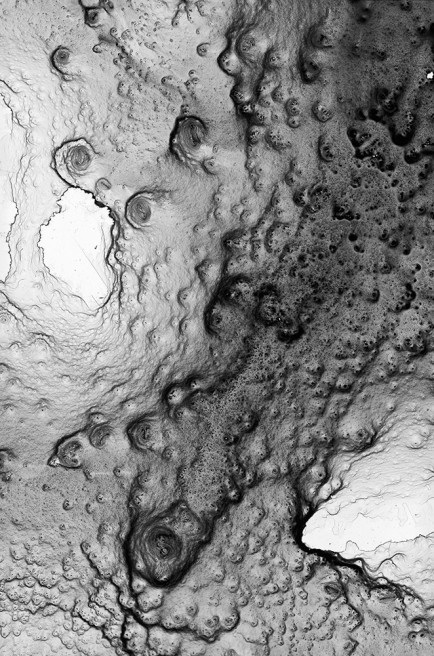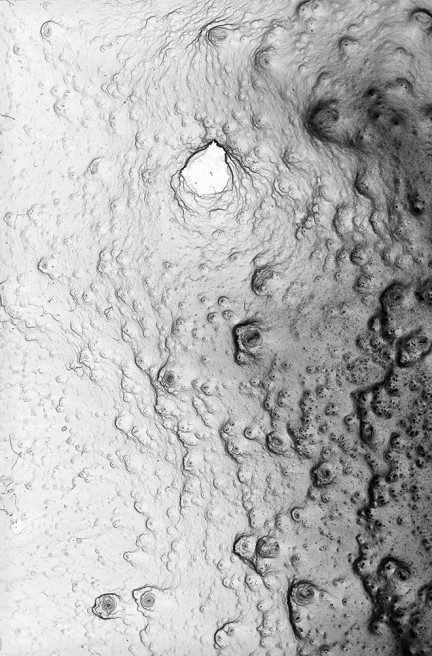I was bored...my prints had only been in the archival wash for 15 minutes, but I was bored and had nothing to do but sit and stare at the patterns made by the water flowing over my prints. It was then that I saw it - this strange, white, crystalline mess in the form of a spill on the rim of the sink. The structure was beautiful, complex, and I wanted to know what kind of chemical would dry and leave those shapes behind. It turned out to be D76 developer, and I began to think about how much chemistry was involved with making art, particularly mine. I started experimenting with different ways I might be able to capture the process behind the process - to document the subtle chemical shifts that made photography possible.
This series is the result of my quest. These photographs were made by painting a solution of rubbing alcohol and waterproof ink onto a sheet of acetate. The sheet was then cut into 35mm sections and scanned as slide film.
I found, quite by accident, that the nature of the ink/alcohol solution is such that a few sweeps with a saturated brush on any non-porous surface will morph and shape-shift on their own, with little or no direction/involvement from me. The accelerated drying of the wash due to the alcohal content allows for the ink to clot in its own patterns, rendering highly detailed, intricate, organic designs, complete with the type of topographic depth most often seen rendered not by human hand, but by natural occurrence.
The photographs end up being a record of the process by which they were created - a testament to the behavior, beauty, and creative power of the materials themselves without the presence of the artist’s hand.
By this rout, they may also stand as an analogy for the age-old argument that has plagued Photography since its inception: "With so much of traditional photography reliant on chemistry and machinery, who is writing with light - the silver-filled black box, or the person holding the silver-filled black box?" Though the question has since been answered, and the answer accepted by virtually all, I believe the question to remain a major part of Photography's history as both a scientific and artistic medium - one that worked to shape the historical trajectory of the medium and its many uses, and one that I think will continue to shape the course of contemporary photography as digital technologies replace their chemical counterparts.











